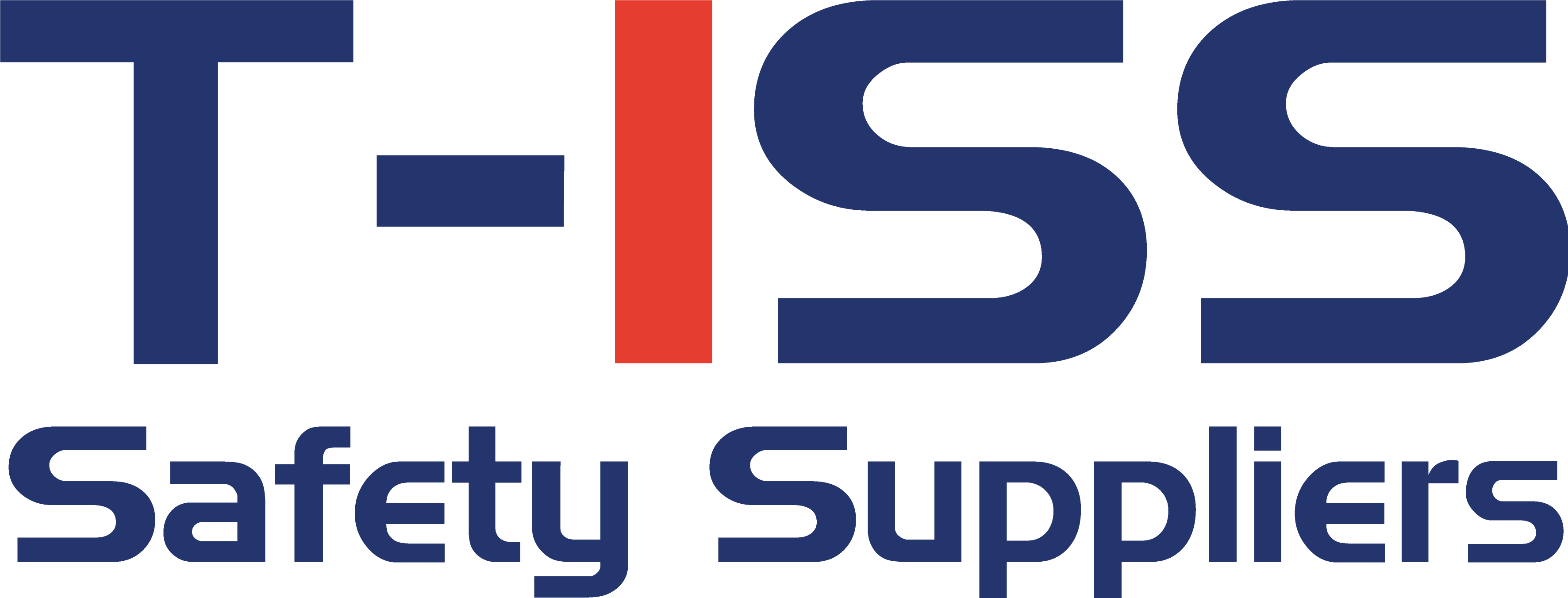Posted by Nicky Smol on September 17, 2024 in Other news
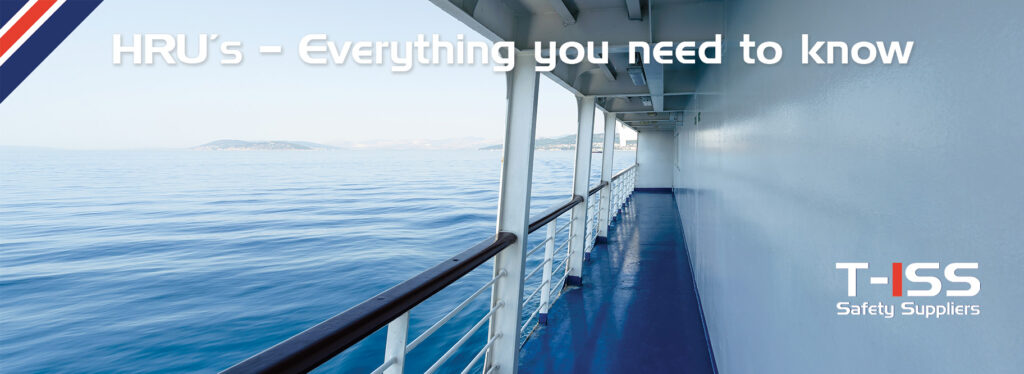
A Hydrostatic Release Unit (HRU) is a piece of maritime safety equipment designed to automatically release life-saving devices, such as life rafts or EPIRBs. “Hydrostatic” is a term that relates to the properties and behavior of fluids, particularly liquids such as water. In the unfortunate case a vessel sinks or is submerged in water, an HRU will automatically release life rafts and EPIRB’s.
The HRU is a compact, reliable, and lifesaving device that is essential for marine safety.
A Hydrostatic Release Unit works quite easily. Once installed, there are no more actions for your crew to undertake. This is how it works:
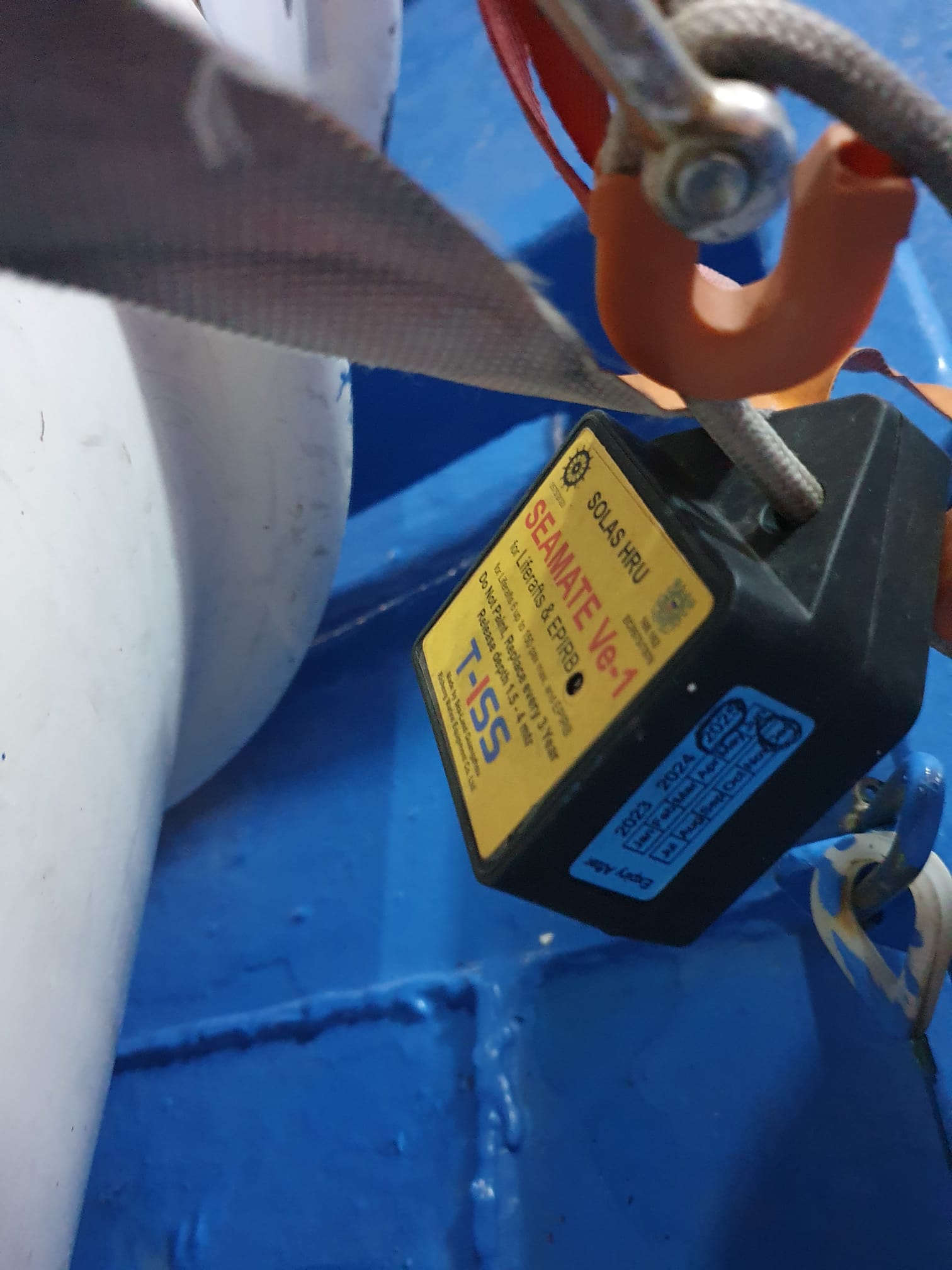
2. Automatic Activation: Upon reaching this depth, the HRU automatically cuts its securing rope, detaching the life raft or EPIRB (Emergency Position Indicating Radio Beacon) from the vessel.
3. Life raft or EPIRB Deployment: Once released, the life raft or EPIRB floats freely to the water’s surface, ready to be accessed or automatically activate, ensuring it can be quickly located by rescue teams.
While most HRU’s have an expiry life of 2 years, T-ISS offers a Hydrostatic Release Unit with an expiry life of 3 years. This means you only replace the HRU every 3 years, saving you time and money, while also reducing the environmental impact.
No, if you have a Disposable Hydrostatic Release Unit, like the T-ISS Seamate V1 HRU, it does not need to be serviced.
Hydrostatic Release Unit come in two different types: disposable and serviceable. Disposable HRU’s do not require servicing, because they have to be replaced every 2 years – or, in the case of the HRU by T-ISS, every 3 years. These HRU’s are designed for one time use.
While Serviceble HRU’s have a longer lifespan than disposable HRU’s, they have higher maintenance costs, they must be serviced every 12 – 17 months at an authorized servicing station and there is more potential for human error.
If your company prioritizes convenience and lower short-term costs, disposable HRUs are your best option. These HRU’s require minimal management and are ideal for vessels where the cost of maintenance outweighs the cost of regular replacement.
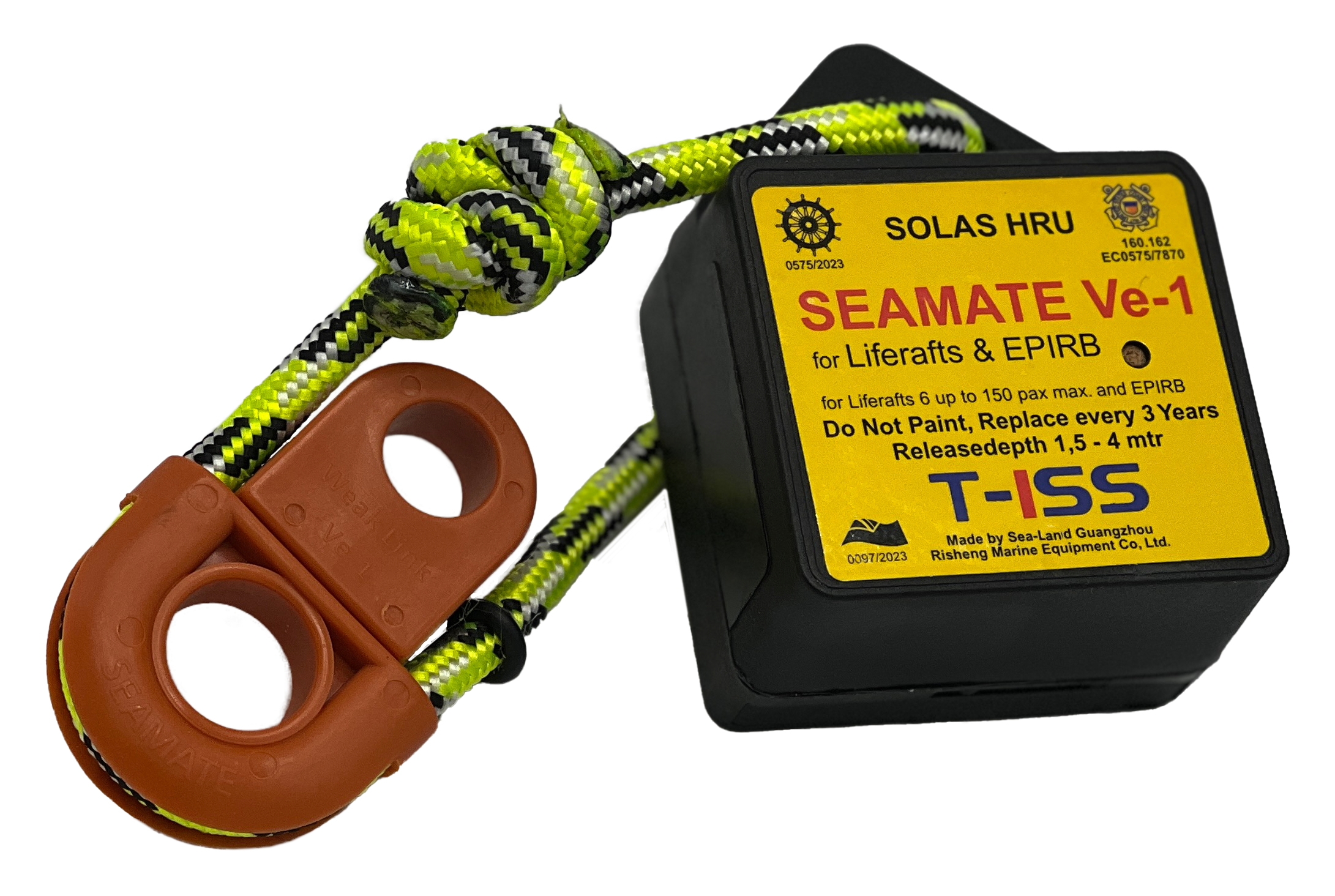
The likelihood of a Hydrostatic Release Unit (HRU) failing to activate is relatively low, provided it is replaced according to the manufacturer’s guidelines. If an HRU does fail, it can create a serious safety risk, as the life raft or Emergency Position Indicating Radio Beacon (EPIRB) may not deploy when needed.
This is why it is important to get your HRU’s from a trusted organization, that complies with all necessary standards and regulations.
The HRU (Hydrostatic Release Unit) is often installed on the life raft’s cradle or housing, or mounted directly on the EPIRB’s bracket.
On the life raft, it is connected to the liferaft by a lashing and weak link, which allows the HRU to cut the securing line and release the raft when submerged to a certain depth. On the EPIRB, the HRU serves a similar function, ensuring that the EPIRB is automatically released from its mounting when submerged. This allows the EPIRB to float free to the surface and begin transmitting distress signals, aiding rescue efforts.
The weak link (a special cord or line) in a Hydrostatic Release Unit (HRU) is a safety component designed to break under a specific load, allowing the life raft or EPIRB to detach from the vessel when submerged. The weak link serves as the final connection between the vessel and the life-saving equipment.
Key Points about the Weak Link:
1. Breaking Strength: The weak link (a special line or cord) is designed to break when the force on it gets too strong, ensuring the life raft or EPIRB is released at the right moment. For the T-ISS Seamate-V1 HRU, which is SOLAS-approved, the weak link is designed to break under a load of 2.2 ± 0.4 kN (kilonewtons). This load is calculated to ensure that the life raft or EPIRB remains securely attached to the vessel until the vessel reaches a critical depth.
2. Functionality: The weak link ensures that once the HRU cuts the securing line, the life raft or EPIRB is not prematurely detached. However, as the vessel sinks, the tension on the weak link increases, eventually causing it to break, allowing the equipment to float to the surface.
3. Safety Role: The weak link is a vital safety mechanism because it prevents the life-saving equipment from being deployed too early or being released improperly. It ensures the life raft or EPIRB is only released when necessary, minimizing the risk of malfunction or failure to deploy during an emergency
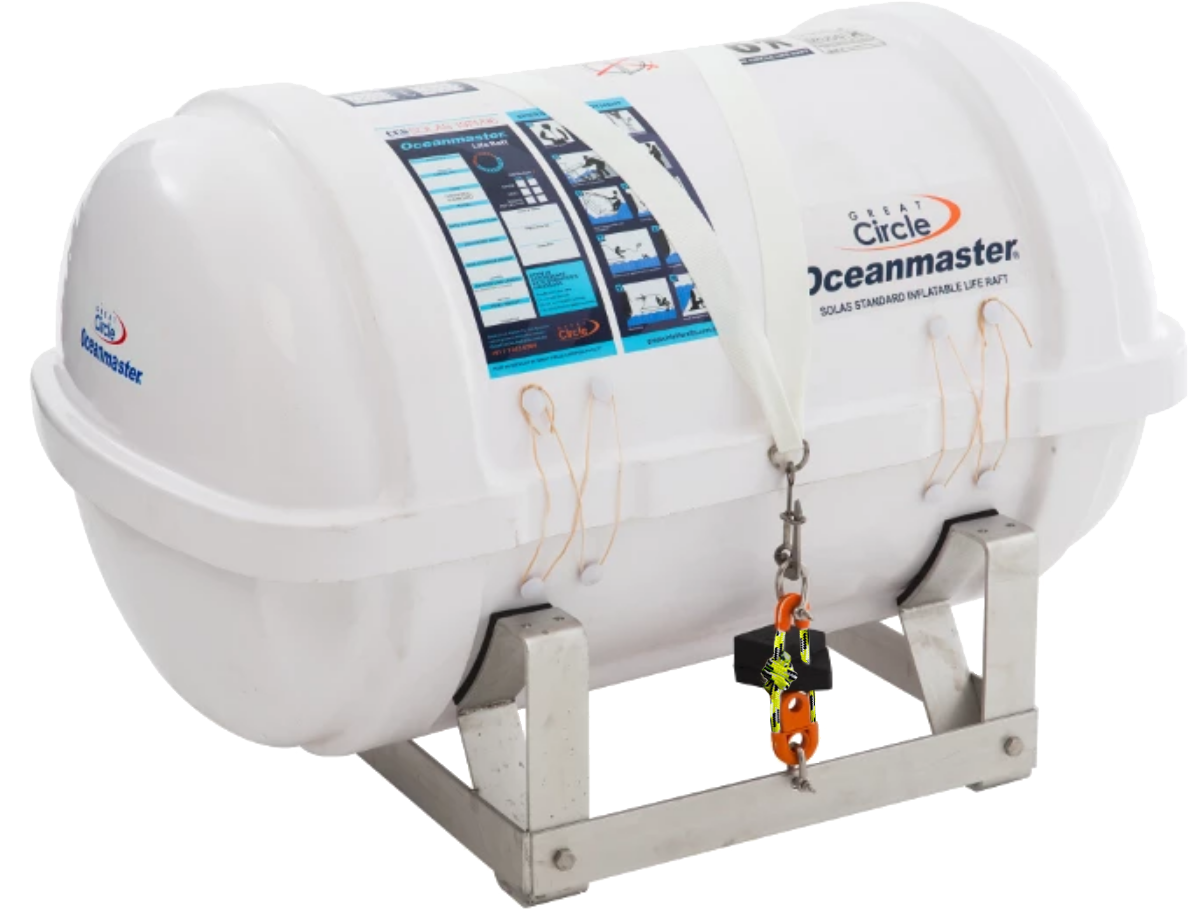
Yes, for all SOLAS-regulated vessels HRUs are mandatory. For non-SOLAS recreational or small vessels, HRUs are optional but still recommended for added safety.
No, a Hydrostatic Release Unit (HRU) cannot be manually activated, as it is designed to trigger automatically when submerged to a specific depth.
However, while the HRU itself doesn’t offer a manual release option, you can still deploy your life rafts and other safety equipment manually using our manual release hooks. At T-ISS, we offer manual Release Hooks that allow crew members to manually release life rafts or life-saving devices when necessary.
The best Hydrostatic Release Unit (HRU) for your vessel depends on several factors, including the size and type of your vessel, the type of safety equipment (life raft or EPIRB), and compliance with maritime safety regulations like SOLAS.
The T-ISS SeaMate VE-1 is a versatile, SOLAS-approved HRU that automatically releases liferafts when submerged to a depth of 1.5 to 4 meters. This HRU is suitable for a wide range of vessels, from commercial ships to smaller recreational boats that need to meet high safety standards.
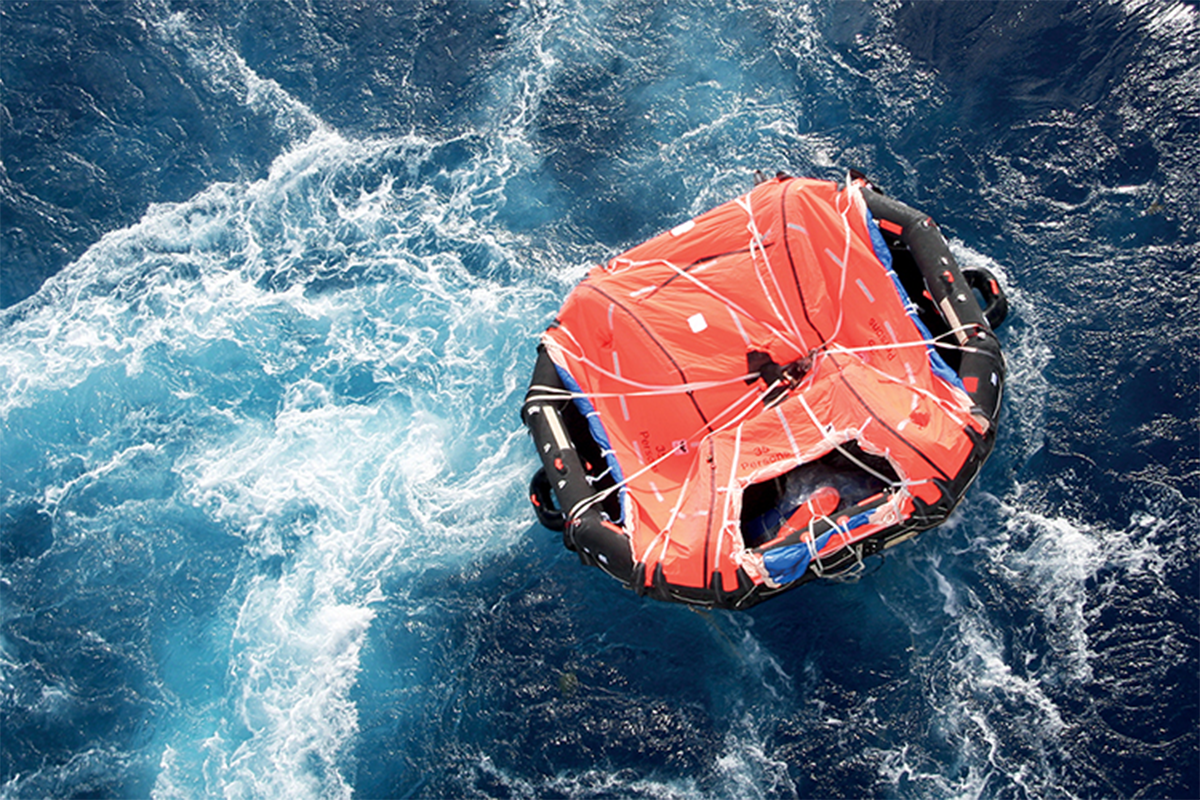
For more information about our HRU or other safety products, please contact us.
Helmkamp 32-34
7091HR Dinxperlo
The Netherlands
Mail: sales@t-iss.com
Tel: +31 (0) 315 656060
Fax: +31 (0) 315 656063
